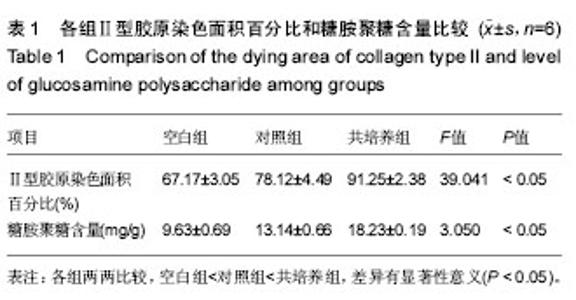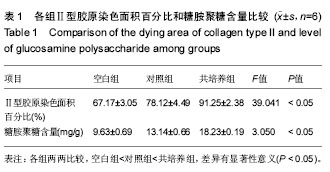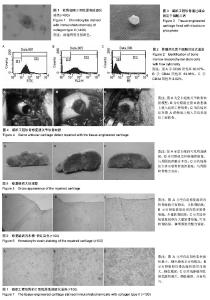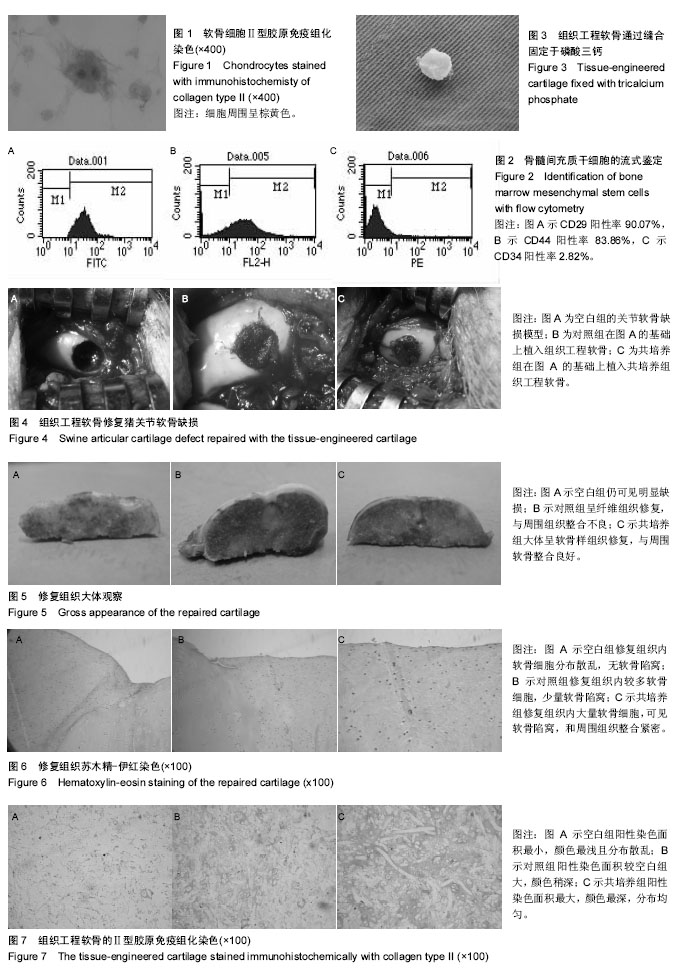| [1] Komárek J, Vališ P, Repko M, et al. Treatment of deep cartilage defects of the knee with autologous chondrocyte transplantation: long-term results. Acta Chir Orthop Traumatol Cech. 2010;77(4): 291-295.[2] Duarte Campos DF, Drescher W, Rath B, et al. Supporting Biomaterials for Articular Cartilage Repair. Cartilage. 2012; 3(3): 205-221.[3] Mazor M, Lespessailles E, Coursier R, et al. Mesenchymal stem-cell potential in cartilage repair: an update . J Cell Mol Med. 2014;18(12): 2340-2350.[4] Raghunath J, Salacinski HJ, Sales KM, et al. Advancing cartilage tissue engineering: the application of stem cell technology. Curr Opin Biotechnol. 2005;16(5):503-509.[5] Chen S, Fu P, Cong R, et al. Strategies to minimize hypertrophy in cartilage engineering and regeneration . Genes Dis. 2015;2(1): 76-95.[6] Li H, Sun S, Liu H, et al. Use of a biological reactor and platelet-rich plasma for the construction of tissue-engineered bone to repair articular cartilage defects. Exp Ther Med. 2016;12(2): 711-719.[7] Kopesky PW, Byun S, Vanderploeg EJ, et al. Sustained delivery of bioactive TGF-β1 from self-assembling peptide hydrogels induces chondrogenesis of encapsulated bone marrow stromal cells . J Biomed Mater Res A. 2014;102(5): 1275-1285.[8] 陈刚,崔维顶,范卫民.软骨细胞和骨髓间充质干细胞混合培养构建组织工程软骨的实验研究[J]. 中华骨科杂志,2010,30(7): 684-690.[9] Ochi M, Uchio Y, Kawasaki K, et al. Transplantation of cartilage-like tissue made by tissue engineering in the treatment of cartilage defects of the knee. J Bone Joint Surg(Br). 2002;84:571-578.[10] Liu Y, Chen F, Liu W, et al. Repairing large poreine full-thickness defects of artilage using autologous chondrocyte engineered cartilage. Tissue Eng. 2002;8(4): 709-721.[11] Zhao M, Chen Z, Liu K, et al. Repair of articular cartilage defects in rabbits through tissue-engineered cartilage constructed with chitosan hydrogel and chondrocytes . J Zhejiang Univ Sci B. 2015;16(11): 914-923.[12] Kock L, van Donkelaar CC, Ito K. Tissue engineering of functional articular cartilage: the current status . Cell Tissue Res. 2012;347(3): 613-627.[13] Lv YM, Yu QS. Repair of articular osteochondral defects of the knee joint using a composite lamellar scaffold. Bone Joint Res. 2015; 4(4):56-64. [14] Ma X, Sun Y, Cheng X, et al. Repair of osteochondral defects by mosaicplasty and allogeneic BMSCs transplantation . Int J Clin Exp Med. 2015;8(4): 6053-6059.[15] Yamasaki S, Mera H, Itokazu M, et al. Cartilage Repair With Autologous Bone Marrow Mesenchymal Stem Cell Transplantation: Review of Preclinical and Clinical Studies. Cartilage. 2014;5(4):196-202.[16] Marlovits S, HombauerM, Truppe M, et al. Changes in the ratio of type-I and type-II collagen expression during momolayer culture of human chondrocytes . J Bone Joint Surg (Br). 2004;86(5):286-295.[17] Brittberg M, Gomoll AH, Canseco JA, et al. Cartilage repair in the degenerative ageing knee. Acta Orthop. 2016;87(sup363): 26-38.[18] Fujie H, Nakamura N. Frictional properties of articular cartilage-like tissues repaired with a mesenchymal stem cell-based tissueengineered construct. Conf Proc IEEE Eng Med Biol Soc. 2013:401-404.[19] Liu K, Zhou GD, Liu W, et al. The dependence of in vivo stable ectopic chondrogenesis by human mesenchymal stem cells on chondrogenic differentiation in vitro. Biomaterials. 2008;29(14):2183-2192.[20] He X, Feng B, Huang C, et al. Electrospun gelatin/polycaprolactone nanofibrous membranes combined with a coculture of bone marrow stromal cells and chondrocytes for cartilage engineering. Int J Nanomedicine. 2015;17(10):2089-2099.[21] Zhang L, He A, Yin Z, et al. Regeneration of human-ear-shaped cartilage by co-culturing human microtia chondrocytes with BMSCs . Biomaterials. 2014;35(18): 4878-4887. [22] Kang N, Liu X, Guan Y, et al. Effects of co-culturing BMSCs and auricular chondrocytes on the elastic modulus and hypertrophy of tissue engineered cartilage. Biomaterials. 2012;33(18):4535-4544. [23] Chen WH, Lai MT, Wu AT, et al. In vitro stage-specific chondrogenesis of mesenchymal stem cells committed to chondrocytes . Arthritis Rheum. 2009;60(2):450-459. [24] Tsuchiya K, Chen G, Ushida T, et al. The effect of coculture of chondrocytes with mesenchymal stem cells on their cartilaginous phenotype in vitro. Materials Sci Eng. 2004;(24): 391-396.[25] Ko CY, Ku KL, Yang SR, et al. In vitro and in vivo co-culture of chondrocytes and bone marrow stem cells in photocrosslinked PCL-PEG-PCL hydrogels enhances cartilage formation. J Tissue Eng Regen Med. 2016;10(10): E485-E496.[26] Liu X, Sun H, Yan D, et al. In vivo ectopic chondrogenesis of BMSCs directed by mature chondrocytes. Biomaterials. 2010;31(36):9406-9414.[27] Komárek J, Vališ P, Repko M, et al. Treatment of deep cartilage defects of the knee with autologous chondrocyte transplantation: long-term results . Acta Chir Orthop Traumatol Cech. 2010;77(4): 291-295.[28] Knecht S, Erggelet C, Endres M, et al. Mechanical testing of fixation techniques for scaffold-based tissue-engineered grafts . J Biomed Mater Res B Appl Biomater. 2007; 83(1): 50-57.[29] 杨强,彭江,卢世璧,等.组织工程骨-软骨复合体修复犬股骨头负重区大面积骨软骨缺损的实验研究[J]. 中华骨科杂志,2011, 31(5): 549-555.[30] 陈刚,钱明权,朱国兴.自体组织工程骨软骨复合体修复猪关节软骨缺损[J]. 中华实验外科杂志,2013,30(3):593-595. |



